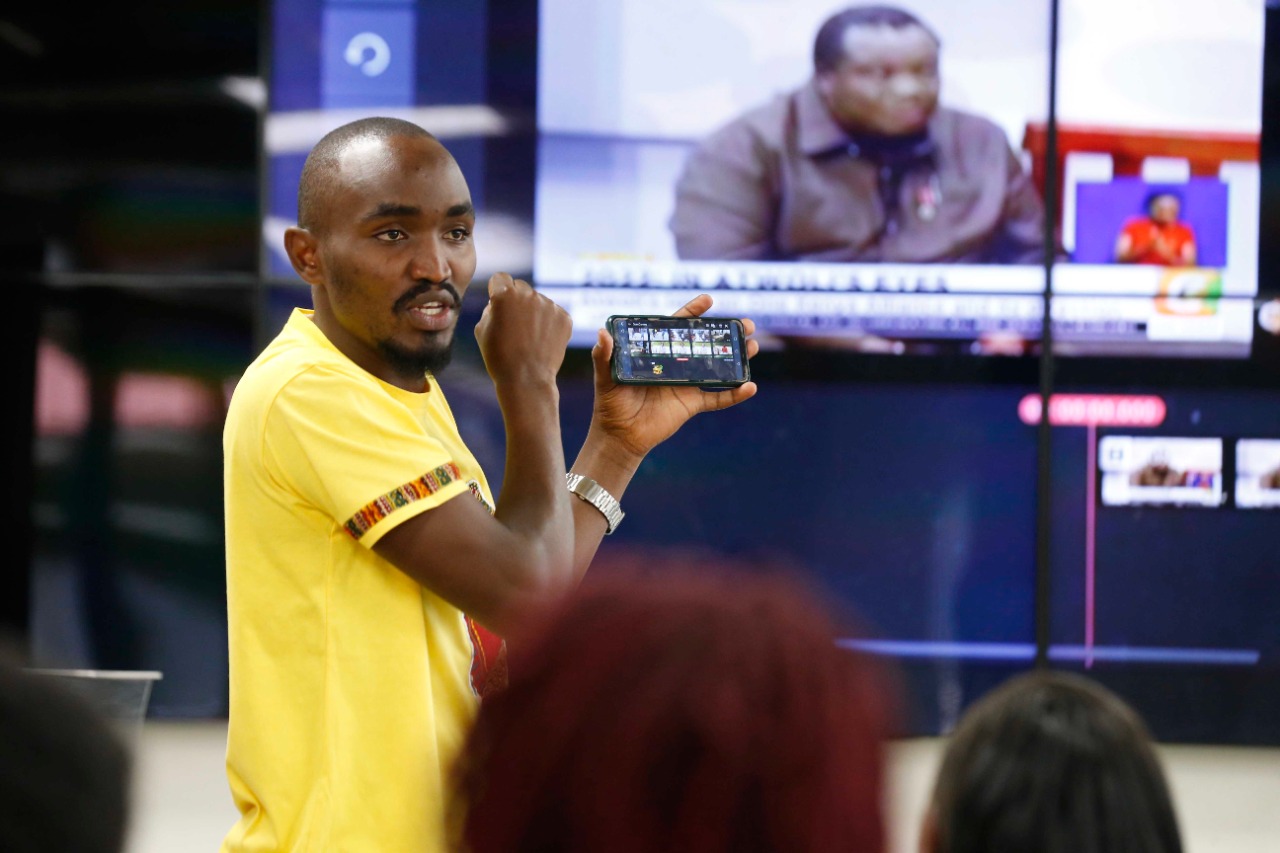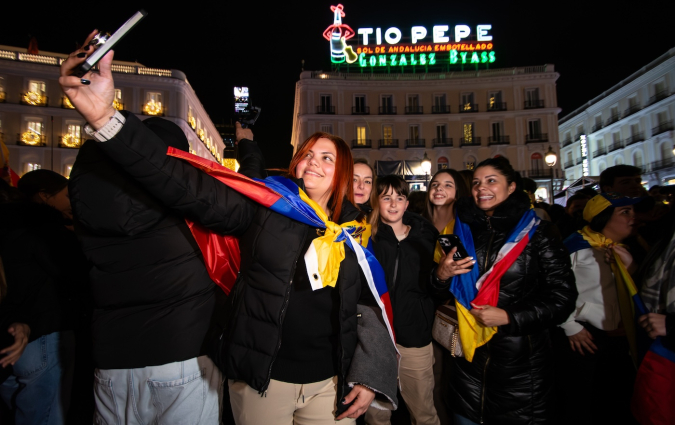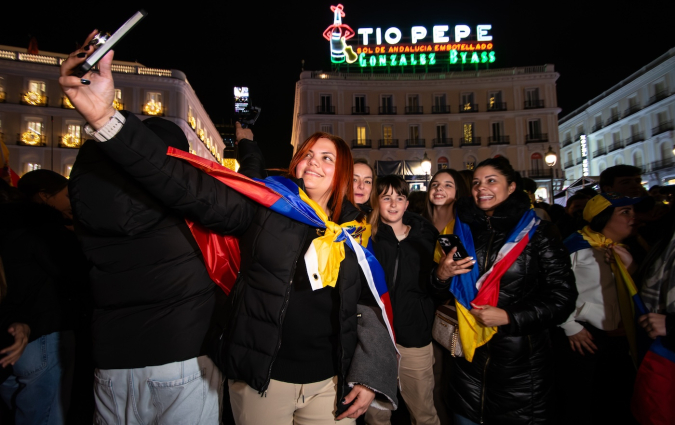“Mobile journalism is the fastest way to change how Africa's story is told”

Emmanuel Yegon, founder of Mobile Journalism Africa.
Emmanuel Yegon is a journalist, a mobile journalism trainer, and the co-founder of Mobile Journalism Africa (MoJo Africa), a digital media outlet that aim to transform how Africa’s narrative is told through mobile journalism. Yegon and his team aims to provide trained journalists with a platform where they can share their professional work in a simple way. Their goal is to empower journalists to tell their own stories using smartphones while maintaining high standards and professionalism.
I recently spoke with Yegon about his outlet and the future of mobile journalism in Africa, where he has trained hundreds of journalists and journalism students. Our conversation has been edited for brevity and clarity.
Q. What is Mobile Journalism Africa?
A. Mobile Journalism Africa is a digital media start-up launched in 2018 with the goal of changing how Africa's narrative is told one story at a time and also equipping young people across the continent with the skill to tell stories so that together, we can work on changing how Africa's narrative is told.
We believe that the fastest way of doing that is through the smartphone because many people are connected or have access to these handsets. So we want to get as many people to be able to tell their own stories from different locations across the continent.
Q. What prompted you to start Mobile Journalism Africa?
A. Two reasons. First, we have thousands of graduates who come out of media or journalism school every year from different colleges in Kenya, but a very small percentage get absorbed into the mainstream media. We wanted this to be a way for fresh graduates to be able to start practising what they’ve learned in journalism school and to start building a portfolio they can show.
The second reason was creating a space for people to tell stories from across the continent. For a very long time, Africa's story has been told through the lenses of people from other parts of the world. And this is a discussion that is big at the moment, and I like the fact that now we have more people championing Africans telling their own stories, through their own eyes and their own lenses. So we wanted to create a platform for Africans to tell their own stories.
Q. What is the potential of mobile journalism in Africa?
A. Mobile journalism has incredible potential in the continent. I say this as somebody who has been in this space for a while. When we started out in 2018, people had a different perception of a journalist using a smartphone.
For instance, when I went to conduct an interview, some subjects used to be sceptical about the quality of what I was doing and whether I was serious about it. Today there's tremendous growth in interest and uptake not only by journalists but also by other content creators. Throughout the pandemic, many journalists worked from home or on the ground and were using smartphones to report. We saw people like Larry Madowo having a simple setup of a tripod, a smartphone and a ring light doing live links or reporting for CNN. This helped change many misconceptions about mobile journalism.
In 2021 we worked with the Aga Khan University's Graduate School of Media and Communications to train a cohort of journalists on mobile journalism. After the training, they were placed in different newsrooms for six months and were told to produce stories using smartphones. Then some of the media houses decided to retain them and even went a step further: they equipped other journalists with smartphones to produce short stories for their digital platforms.
Q. You mentioned that when you first started in 2018, the reception was not very positive. What do you think changed the perception of both subjects and audiences?
A. I’d say it’s a combination of a lot of factors. A question I usually ask is, “when you're watching any type of content, is the first thought that comes to your mind, which device was used to capture this?” More often than not, the answer is “no”, right? You just focus on the content and you consume the content the way it is.
Today there is more emphasis on the content rather than on how the content was made.
Many notable journalists do use smartphones to film or report live. Some media organisations that formerly conducted interviews with huge cameras and tripods are now recording footage on smartphones. This has changed how people view mobile journalism. A new wave of content creators using their smartphones to create various forms of content whether for TikTok, Instagram, or YouTube has contributed to reshaping perspectives.

Q. Which training programs do you provide?
A. The training provides us an opportunity to take journalists through essentially what mobile journalism is so they understand their devices with their limitations and strengths, and then how to work through those limitations to still achieve what they want.
We adapt our training to the knowledge of our trainees. But we often go through the basics of storytelling, how to shoot and edit videos with a smartphone as well as the dynamics of distributing content.
Q. What is the potential of mobile journalism in Africa as compared to the west?
A. British specialists in mobile journalism use great gadgets and produce work of an exceptional calibre.
Here in Africa mobile journalism is kind of new. And since mainstream media haven’t been especially receptive, we have a lot of opportunities to use these technologies to create more stories. Imagine how much material we could produce if we used our gadgets.
Additionally, the audience for our mobile journalism stories here in Africa has been very receptive. It is no longer a question of whether people consume mobile journalism. Audiences will always flock to where quality content is. MoJo stories are short and easily shareable, so audiences don't have to spend a lot of time or mobile data on them.
Q. Which African media organisations have embraced mobile journalism?
A. The first people that I learned from is the BBC Nairobi bureau. They were keen on mobile journalism from the very initial stages. The others that joined in the wave in Kenya included outlets such as Citizen TV, KTN and NTV. Some of the content of digital platforms like Kenyans is also produced with smartphones.
Across the continent, we have also inspired other people to start their own digital platforms. A start-up called Salone Messenger in Sierra Leone was founded by a journalist whom we trained. DW correspondents in Ghana and Zimbabwe also produce their work exclusively on smartphones.
In Uganda, we have the Media Challenge Initiative which also offers training and fellowships on mobile journalism and journalism in general.
I also have colleagues in Tanzania, Sudan, Nigeria and Somalia who are taking these skills seriously. In some places, mobile journalism is not mainstream yet and it’s only practised by small start-ups.
Q. What are some of the challenges that mobile journalism faces in the continent?
A. One of the major challenges is connectivity in some countries. Connectivity affects mobile journalism in two ways. First, the uploading or sharing of the content. Without an internet connection, then you cannot upload your work. Secondly, connectivity also affects quality and consumption. For instance, if you put out only 4k videos then it means you are restricting your content to those who have good internet connectivity.
The second challenge mobile journalism faces is that the production of these stories often requires access to paid software. Most applications are free for Android users, but those that are good for content creation are subscription based. Of course, they have a free version, but it has limited features. At MoJo Africa, we have done our best to reach out to some of the organisations behind these apps to work out some arrangements.
There is also a challenge with access to the tools needed for the production of MoJo stories. These are things like microphones, tripods and other accessories apart from the smartphone.
Q. What actions should newsrooms take in relation to mobile journalism?
A. Either they adapt or they will be left out. Newsrooms in the continent should be prepared to accommodate those who do mobile journalism.
The number of stories that newsrooms can produce is limited by the number of reporters they have. For instance, if they had to cover an election, do they have enough people to send out to every corner of the country? Is there a newsroom in Kenya that can confidently say that they have covered everything that's happened around the country with their reporters? The answer is no.
Elections are hard to cover. There are a lot of things happening at once. But what if they gave space for more journalists to report with their smartphones from all those different places? Newsrooms should adopt mobile journalism and make that part of their workflows.
Q. What does the future hold for mobile journalism in the continent?
A. What matters for me is how we can get these skills to as many people across the continent. We should make mobile journalism so mainstream that it can be taught in universities. Mobile journalism is the fastest way to change how Africa's narrative is told.




